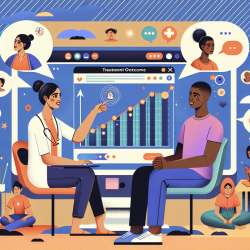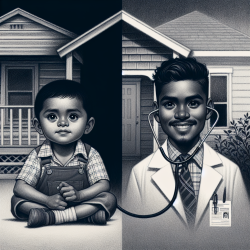Introduction
Child and adolescent injuries are a significant public health concern, particularly in the Eastern Mediterranean Region (EMR). According to the research article "Child and adolescent injury burden in the eastern Mediterranean region: Findings from the Global Burden of Disease 1990-2017," the region bears a disproportionate share of the global injury burden. This blog aims to provide practitioners with insights on how to leverage these findings to improve outcomes for children through data-driven strategies.
Understanding the Data
The Global Burden of Disease (GBD) study from 1990 to 2017 provides comprehensive data on injury mortality and morbidity among children aged 0-19. The study highlights that in 2017, 133,117 children died in the EMR due to injuries, with self-harm and interpersonal violence being the leading causes. This data underscores the urgent need for targeted interventions to reduce injury rates in this vulnerable population.
Key Findings and Implications
- High Mortality Rates: The EMR has a higher rate of injury-related deaths compared to global averages, with Syria, Iraq, and Yemen being the most affected.
- Self-Harm and Violence: These are the primary causes of injury-related deaths, highlighting the need for mental health and violence prevention programs.
- Transport Injuries: Despite being preventable, transport injuries remain a significant cause of death, especially in high-income EMR countries.
Strategies for Practitioners
Practitioners can play a crucial role in mitigating the impact of injuries by implementing evidence-based strategies:
- Policy Advocacy: Advocate for stronger enforcement of safety regulations and policies to prevent injuries.
- Community Education: Develop and implement educational programs to raise awareness about injury prevention among children and adolescents.
- Emergency Preparedness: Enhance emergency response systems to improve survival rates following injuries.
Encouraging Further Research
While the GBD study provides valuable insights, there is a need for continuous research to address data gaps and improve injury prevention strategies. Practitioners are encouraged to engage in research initiatives that focus on understanding the root causes of injuries and developing innovative solutions.
Conclusion
Reducing the burden of child and adolescent injuries in the EMR requires a concerted effort from practitioners, policymakers, and communities. By leveraging data-driven strategies and advocating for evidence-based interventions, we can improve outcomes for children and create safer environments for future generations.
To read the original research paper, please follow this link: Child and adolescent injury burden in the eastern Mediterranean region: Findings from the Global Burden of Disease 1990-2017.










